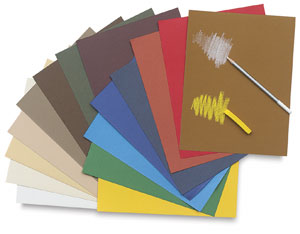If
you are a beginner and want to start from scratch, then, you should
know What Pastel Art Is? The sketches that is drawn by pastels called pastel drawing or pastel
painting. Pastels are the pure powdered pigments that are combined
with a binder to create broad strokes and precise lines.
It is available in a wide range of colors that are easy to blend with fingers without the need for solvent or brushes. Here are some pro tips that will help you to learn the pastel art printing from basics.
Painting With Pastels - Pro Tips for Beginners
Step 1: Collect Essentials
It
is essential to have necessary items which are required for pastel
painting otherwise you will get confused on how to start the
experiment and how to cherish it. First, pick the pastel paper,
disposable gloves, pastel colors, rough drawing book, sketchbook,
apron, eraser, fixative, bulldog clips, hard and soft pencils. After
collecting these things, you can imagine the scenery which you want
to draw or can read the pastel art tutorials
before
start painting.
Step 2: Choose the Pastels as per Your Choice
Several
types of pastels vary from their color and texture. You can choose as
per your desire and budget.
-
Oil Pastels – It is difficult to blend but provides a harder edge. It can be used on wet or dry paper, board, canvas, glass, metal, and wood.
-
Soft Pastels – It is a traditional form of pastels that are made with binders and dry pigments to produce an intense color.
-
Hard Pastels – It is good for drawing crisp lines with less pigment.
-
Pan Pastels – It is used by professional artists due to high-quality pigments. It is easy to erase and works well with traditional pastel sticks and fixatives.
-
Pastel Pencil – It is water-based, eco varnish pencil comes in distinct colors to create an amazing portrait with natural texture.
Step 3: Select the Pastel Paper
Pastel
paper is also referred to as ingers paper that varies from their wide
range of colors and texture. In the beginning, you can purchase cheap
quality paper under your budget. Further, you can use water-soluble
pastel that allows both dry and wet blending. These pastels are
creamy in texture and versatile in nature.
Step 4: Start Making Rough Sketch
You
can draw light shapes, figure, and objects because it will help you to
discover the ideas and transforms the imagination in reality.
Step 5: Focus on Colors
The
color matters a lot when you want to express something from a
painting, it describes the personal behavior and expression. Always
focus on colors and try to use unique ones, so that, they will
significantly reflect the mood and atmosphere.
Step 6: Tooth
Pastels
can be used on any surface such as canvas paper, sandpaper &
boards but few of them easy to bind on the surface. Thus, you should
use a grain of canvas called 'tooth' that provides slight roughness
in the surface to hold the pigments in one place. For Example – The
colored pencil requires a tooth to make the better layers on the
paper plus it provides a firm grip to blend the colors properly.
Step 7: Get Reference from Pastel Art Tutorials
The best approach to learn painting is to follow the professional famous
artists that will help you to understand new pastel techniques. Even,
you can take help from your family and friends who are master in
painting.
Conclusion
Pastel
Painting can be fun-loving if you know the right techniques to use
them. There are over thousands of whimsical colors come in pastels to
create a picturesque art. If you want to decorate your home with
pastel art, visit the 'Pastel Art Prints'
website. We, at Pastel Art Prints, offer a wide range of Pastel Art
Painting crafted by renowned Australian artists.







No comments:
Post a Comment